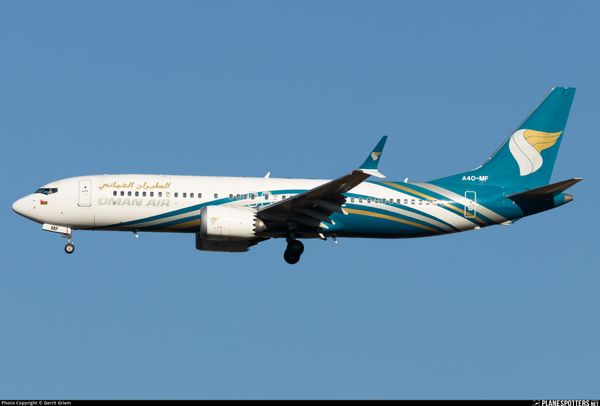The summer of 2023 witnessed a significant resurgence in international travel, marking a turning point for an industry that weathered the storm of the global pandemic. As the demand for flights soared, airlines faced the challenge of adapting to the evolving landscape while addressing newfound opportunities.

The Summer Surge: A Beacon of Hope
The unprecedented summer surge in demand for international travel brought fresh air to an industry grappling with the effects of the COVID-19 pandemic. Fueled by a longing for exploration and reunions with loved ones, travelers flocked to airports, eager to embark on long-awaited journeys. The surge revitalized the airline industry and served as a testament to the enduring human spirit and the inherent desire for connection and discovery.
Technological Innovations and Digital Transformation
The surge in demand for international travel has accelerated the adoption of technology to enhance the overall travel experience. Contactless check-ins, digital health passports, and touchless security processes have become integral to the modern traveler's journey. Airlines are investing in advanced technologies to streamline operations, minimize physical contact, and provide a seamless travel experience from booking to disembarkation. These technological innovations contribute to enhanced safety protocols and cater to the evolving preferences of tech-savvy travelers.

Sustainability Takes Flight
The summer surge has also underscored the growing importance of sustainability in international travel. With heightened environmental awareness, travelers are increasingly mindful of the carbon footprint associated with their journeys. Airlines are responding by investing in sustainable aviation fuels, exploring more fuel-efficient aircraft, and implementing eco-friendly practices. The future of international travel is poised to be greener, focusing on reducing emissions and promoting environmentally responsible practices.
Flexibility and Adaptability: Key Pillars of Resilience
The dynamic nature of the travel landscape post-summer surge emphasizes the need for flexibility and adaptability. Airlines are reevaluating their routes, schedules, and fleet compositions to align with shifting demand patterns. The ability to pivot swiftly in response to changing circumstances, such as emerging variants or geopolitical developments, will be crucial for the sustained recovery and resilience of the international travel industry.

Health and Safety: A Persistent Priority
While the summer surge instilled confidence in the safety measures implemented by airlines, the ongoing commitment to health and safety remains paramount. Stringent hygiene protocols, upgraded air filtration systems, and continued collaboration with health authorities are imperative to reassure travelers and sustain the momentum of the travel resurgence. The future of international travel hinges on the industry's ability to maintain and enhance these safety measures to meet the expectations of a more health-conscious global traveler community.
The Rise of Remote Work and Digital "Nomadism"
The shift towards remote work has reshaped the dynamics of international travel. With more individuals embracing flexible work arrangements, "work from anywhere" has gained prominence. Airlines and destinations are tapping into this trend, offering travel packages tailored to digital nomads seeking a blend of work and leisure. This emerging segment of travelers is reshaping traditional notions of international tourism and presenting new opportunities for airlines and destinations alike.

The strong demand for international travel witnessed during the summer of 2023 has laid the groundwork for a transformative era in the aviation industry. From embracing technological innovations and prioritizing sustainability to fostering flexibility and adapting to changing circumstances, airlines are navigating a dynamic landscape. As health and safety protocols continue to evolve and the rise of remote work influences travel patterns, the future of international travel promises to be a blend of innovation, resilience, and a renewed appreciation for the joy of exploration. The skies, once again, beckon with possibilities, heralding a new chapter for global travel.
When Will the Boeing 777X Enter Service? Delays, Certification, and 2027 Outlook » Making a Stopover in Dubai? Discover How to Book a Yacht and Explore the City in a New Way » KLM Strengthens European Network with Three Scenic Routes »
Comments (0)
Add Your Comment
SHARE
TAGS
INFORMATIONAL Travel COVID-19 Summer Technology Sustainability Route Planning Health Work Future Travel DemandRECENTLY PUBLISHED
 KLM Strengthens European Network with Three Scenic Routes
KLM announced that it will add Jersey, Santiago de Compostela, and Oviedo to its network. Operating from its primary hub at Amsterdam Airport Schiphol (AMS), these routes reinforce KLM's commitment to connecting regional Europe with its vast global network.
ROUTES
READ MORE »
KLM Strengthens European Network with Three Scenic Routes
KLM announced that it will add Jersey, Santiago de Compostela, and Oviedo to its network. Operating from its primary hub at Amsterdam Airport Schiphol (AMS), these routes reinforce KLM's commitment to connecting regional Europe with its vast global network.
ROUTES
READ MORE »
 Oman Air Returns To Singapore After Nine Years with New Boeing 737 MAX Service
Oman Air Returns To Singapore After Nine Years with New Boeing 737 MAX Service. It will resume nonstop service to Singapore Changi Airport (SIN) starting July 2, 2026, restoring a vital link between the Sultanate and Southeast Asia that was suspended in 2017.
ROUTES
READ MORE »
Oman Air Returns To Singapore After Nine Years with New Boeing 737 MAX Service
Oman Air Returns To Singapore After Nine Years with New Boeing 737 MAX Service. It will resume nonstop service to Singapore Changi Airport (SIN) starting July 2, 2026, restoring a vital link between the Sultanate and Southeast Asia that was suspended in 2017.
ROUTES
READ MORE »
 Wizz Air Relaunches Suceava Base with Two A321neos and Seven New Routes
Wizz Air has officially reopened its base at Suceava "Stefan cel Mare" International Airport (SCV). The reopening immediately enhances connectivity by launching seven new direct routes to five countries.
ROUTES
READ MORE »
Wizz Air Relaunches Suceava Base with Two A321neos and Seven New Routes
Wizz Air has officially reopened its base at Suceava "Stefan cel Mare" International Airport (SCV). The reopening immediately enhances connectivity by launching seven new direct routes to five countries.
ROUTES
READ MORE »



